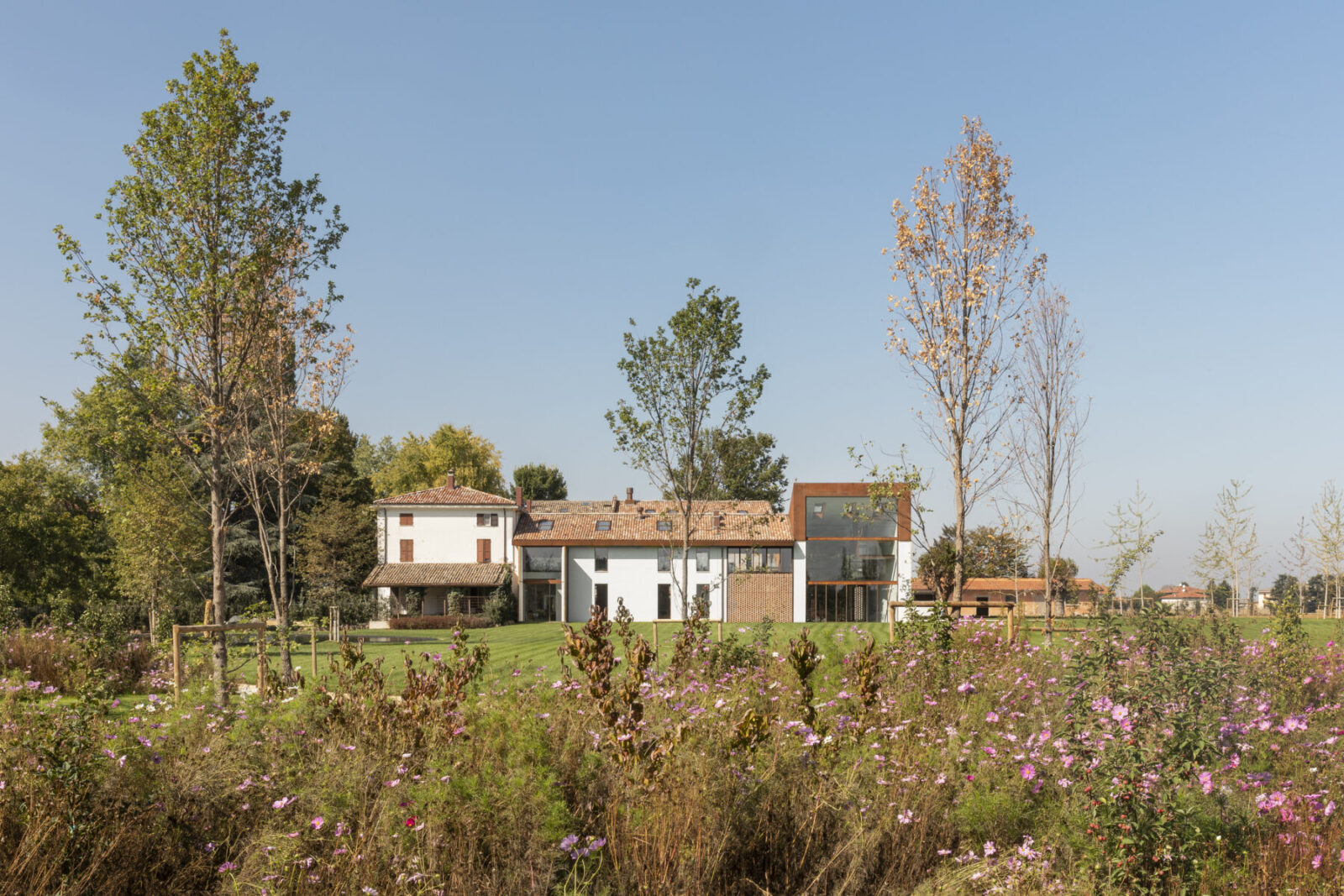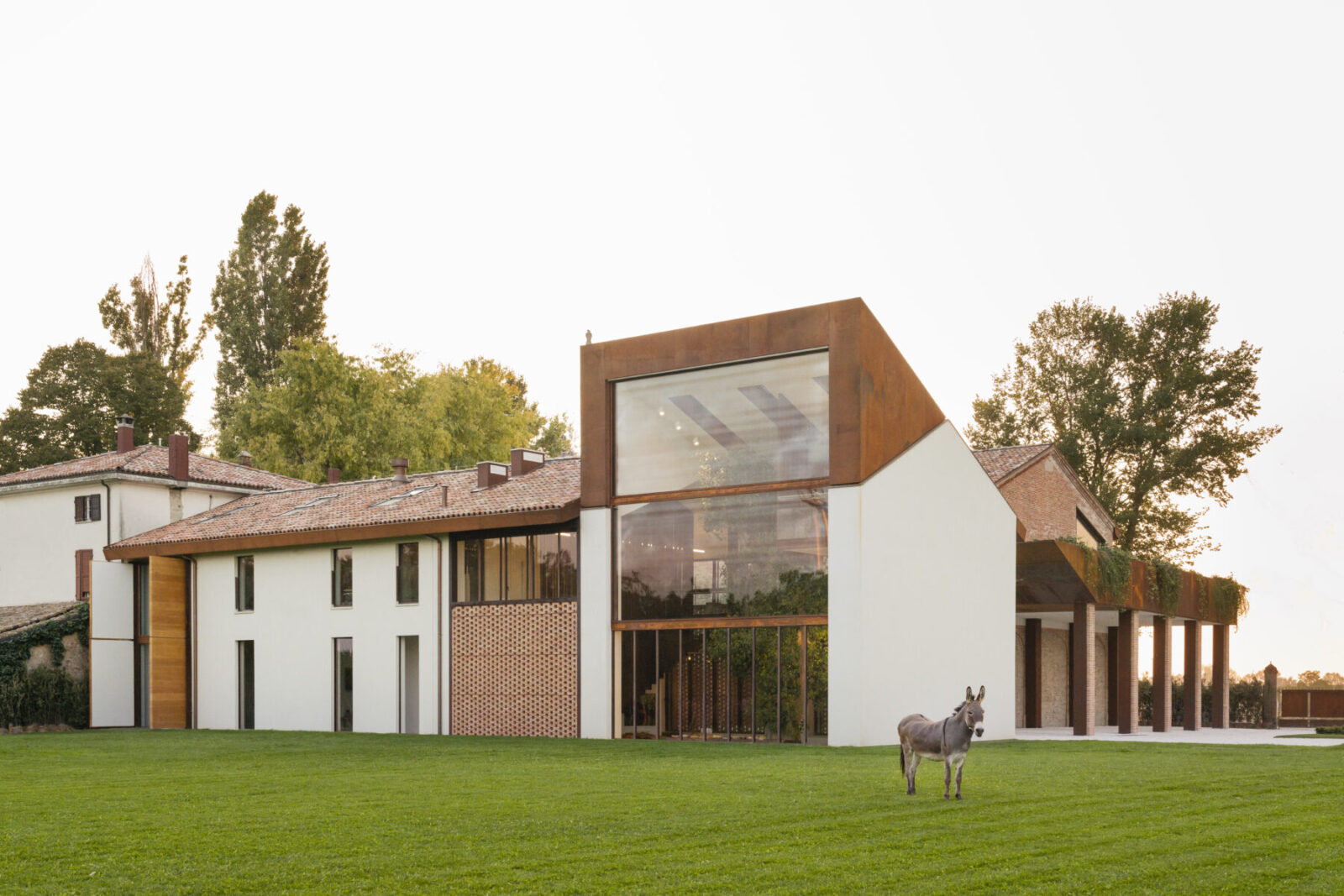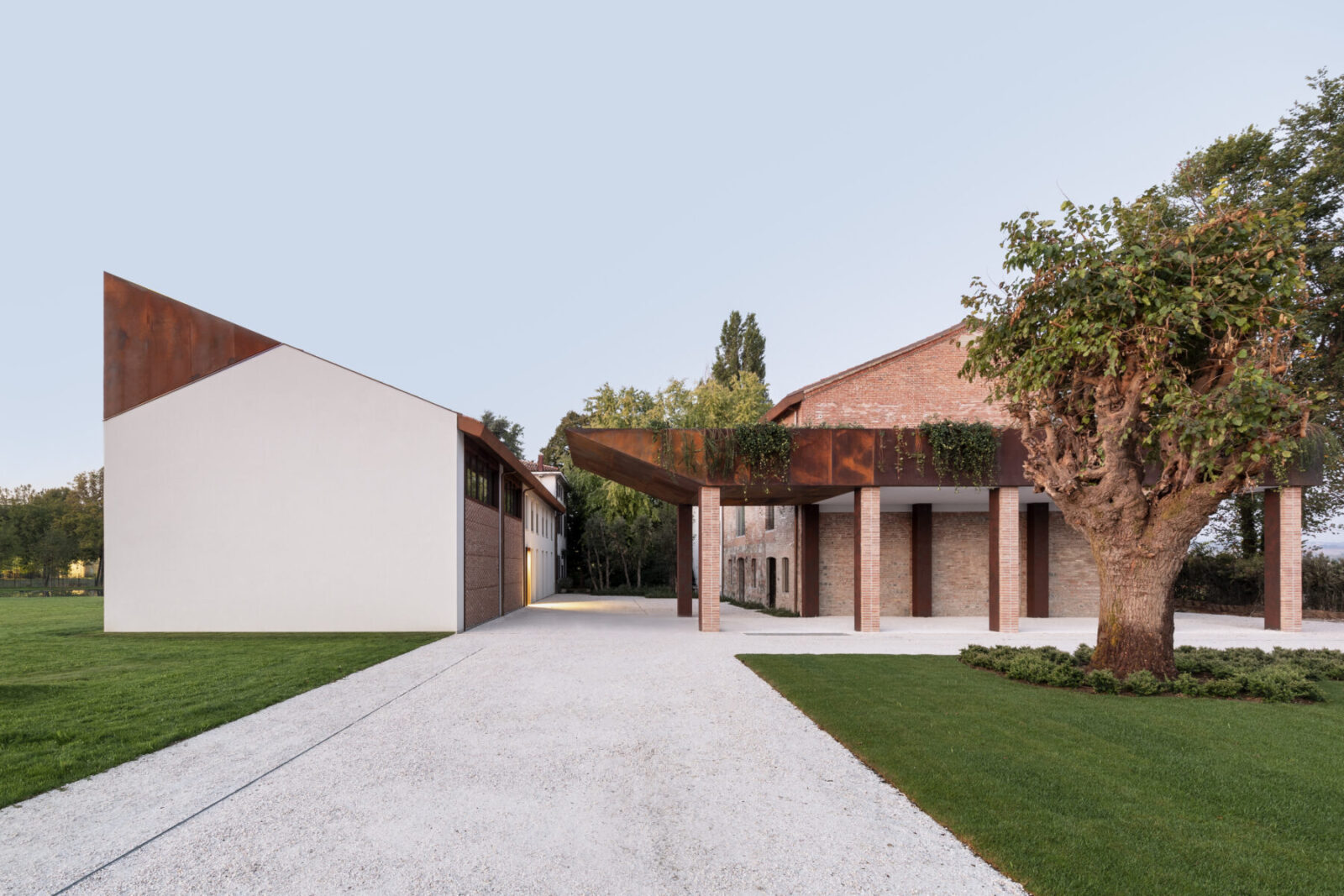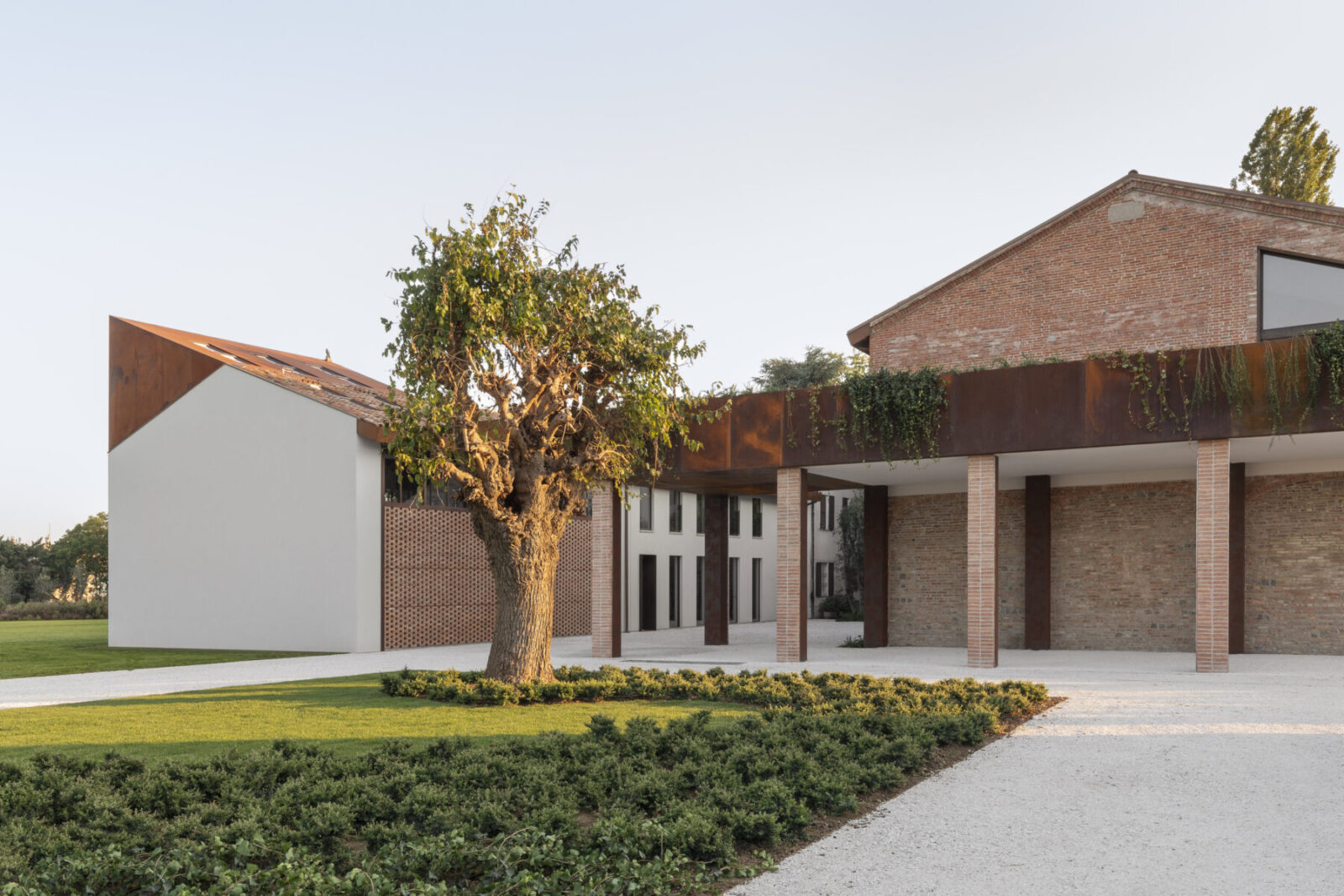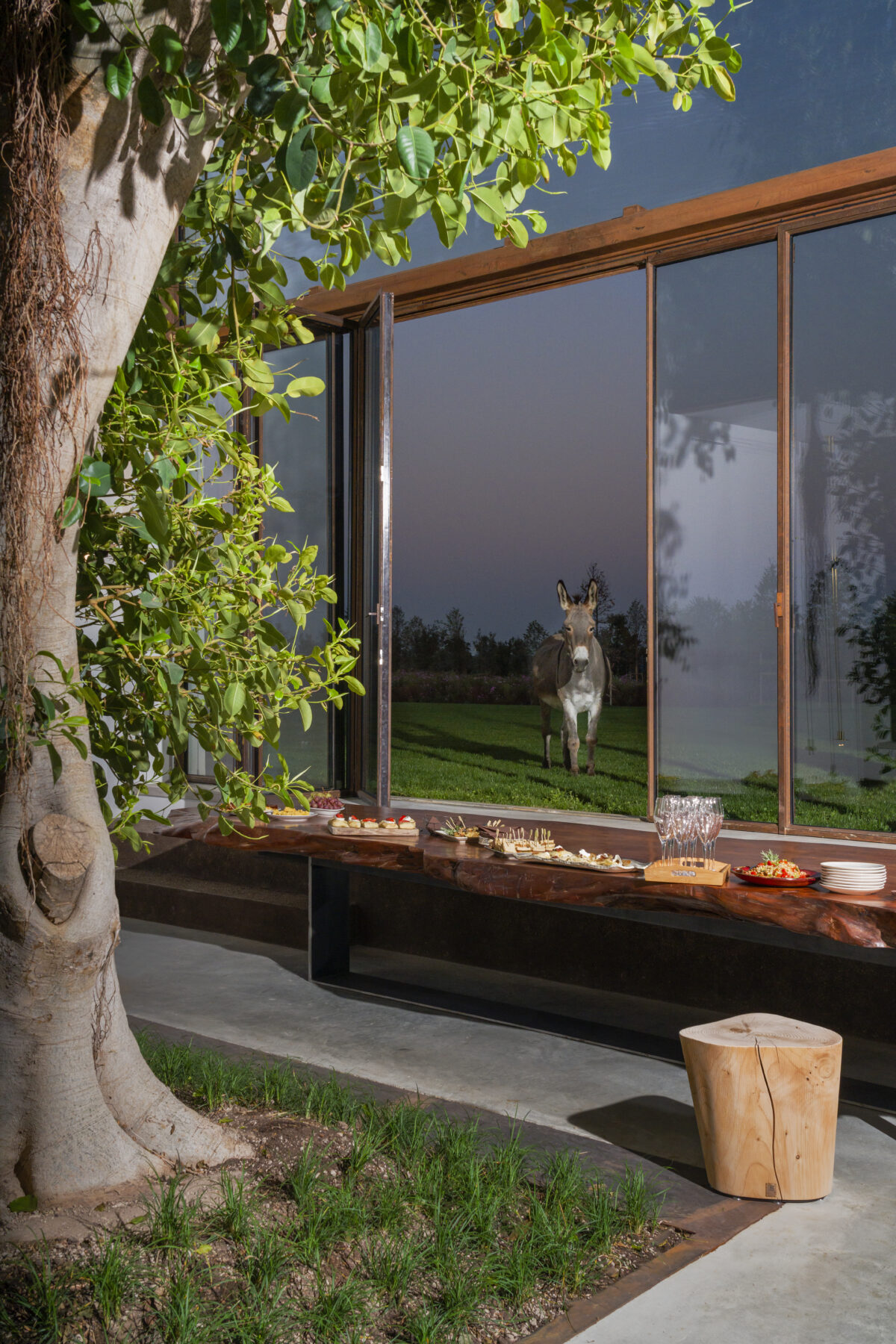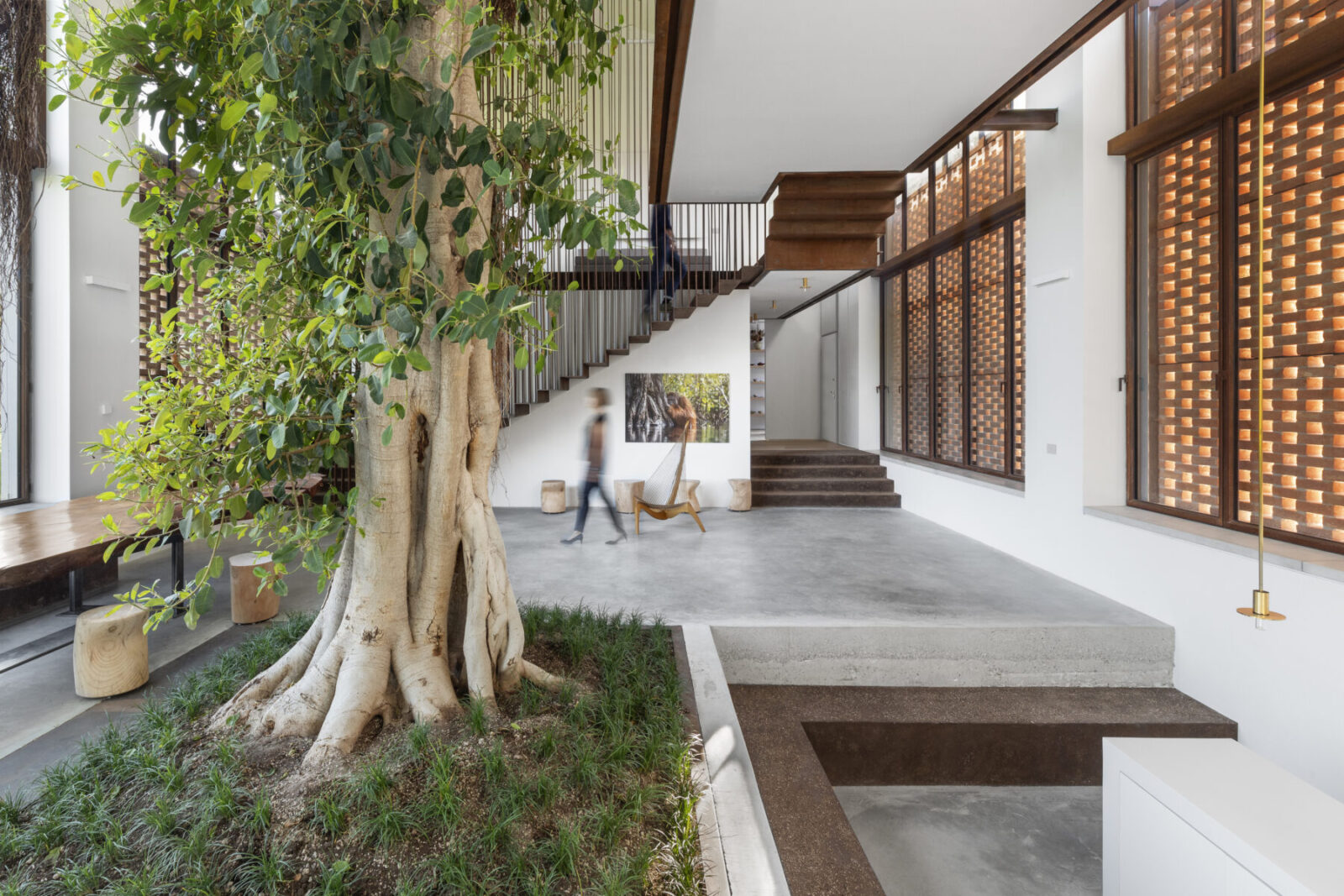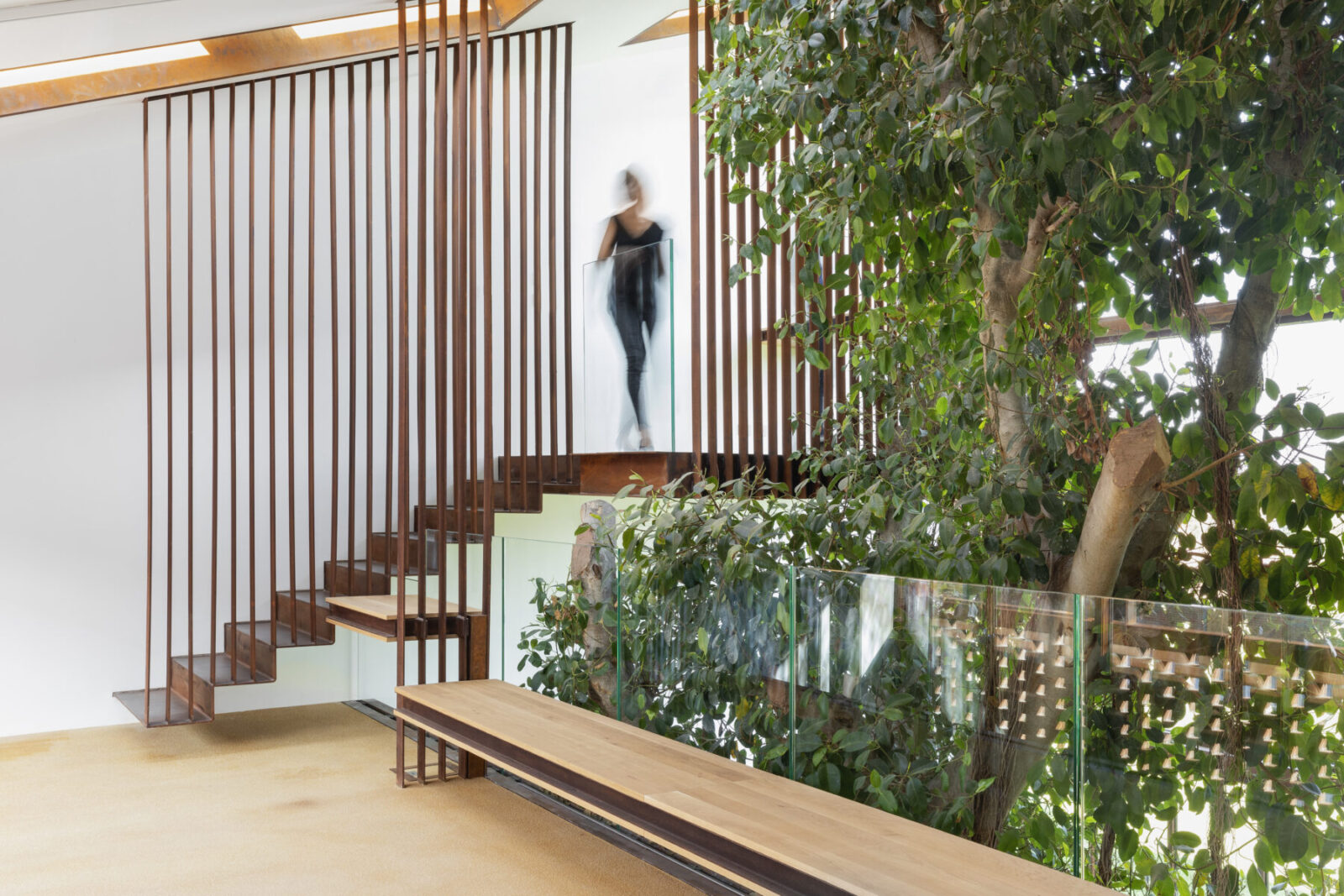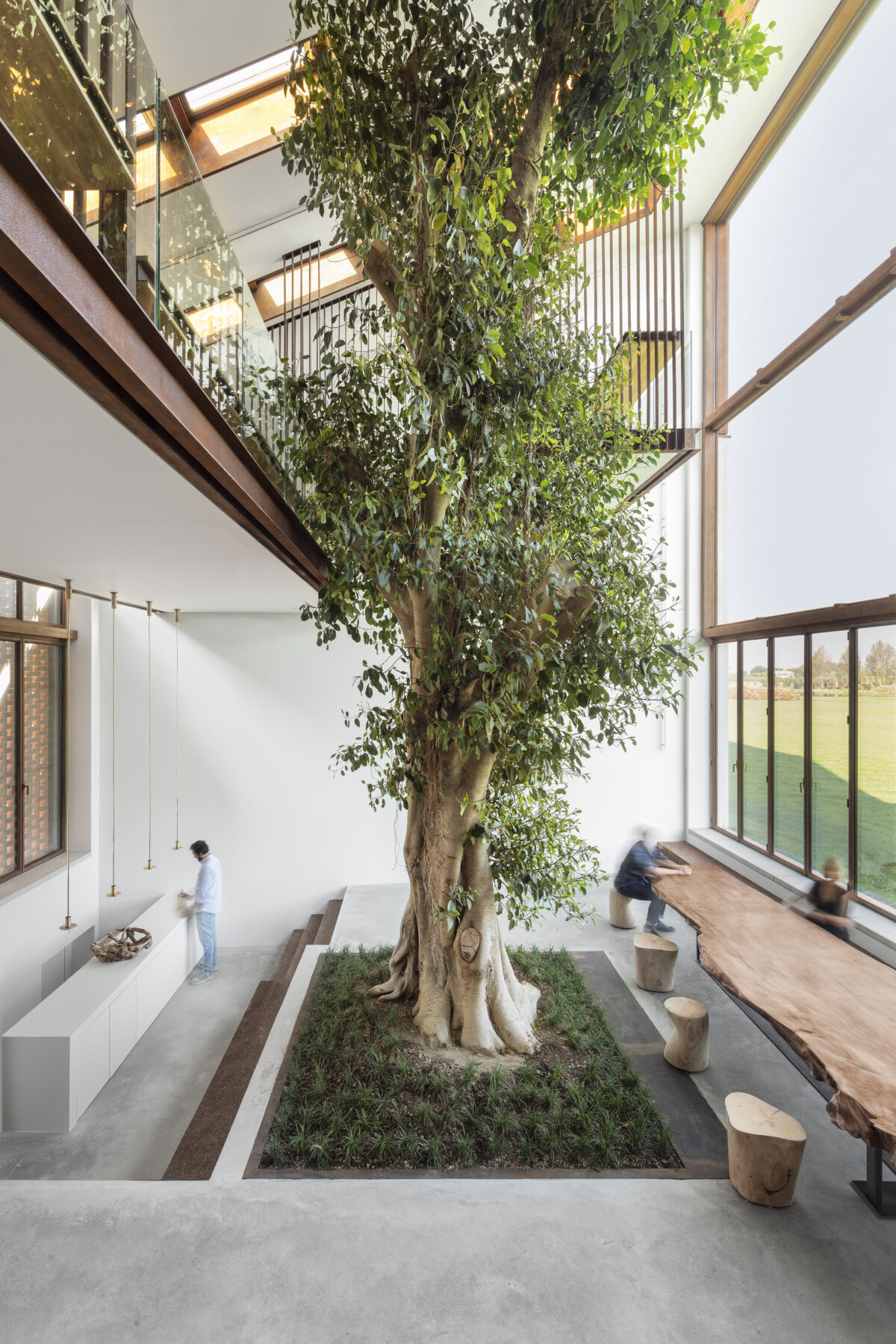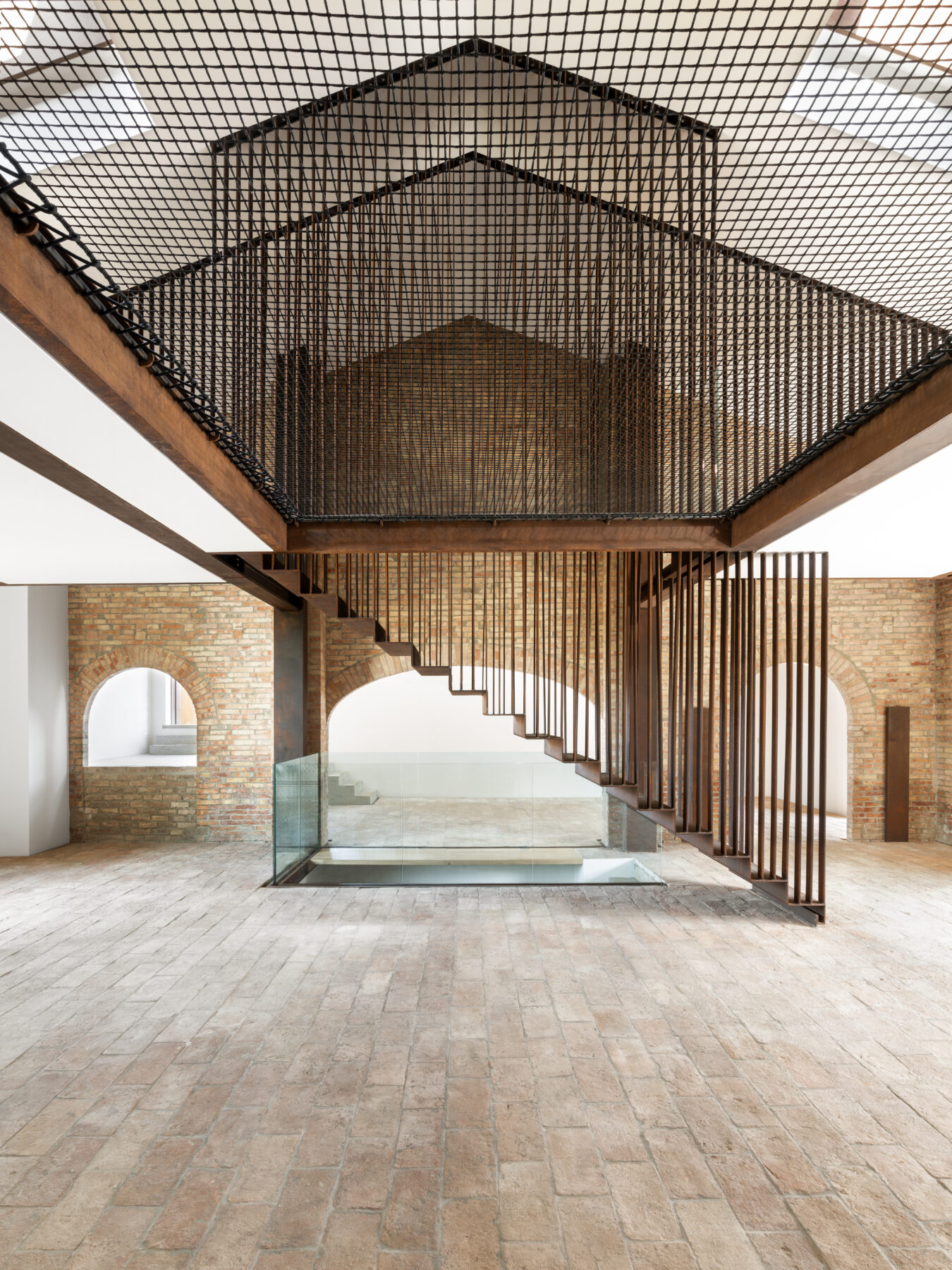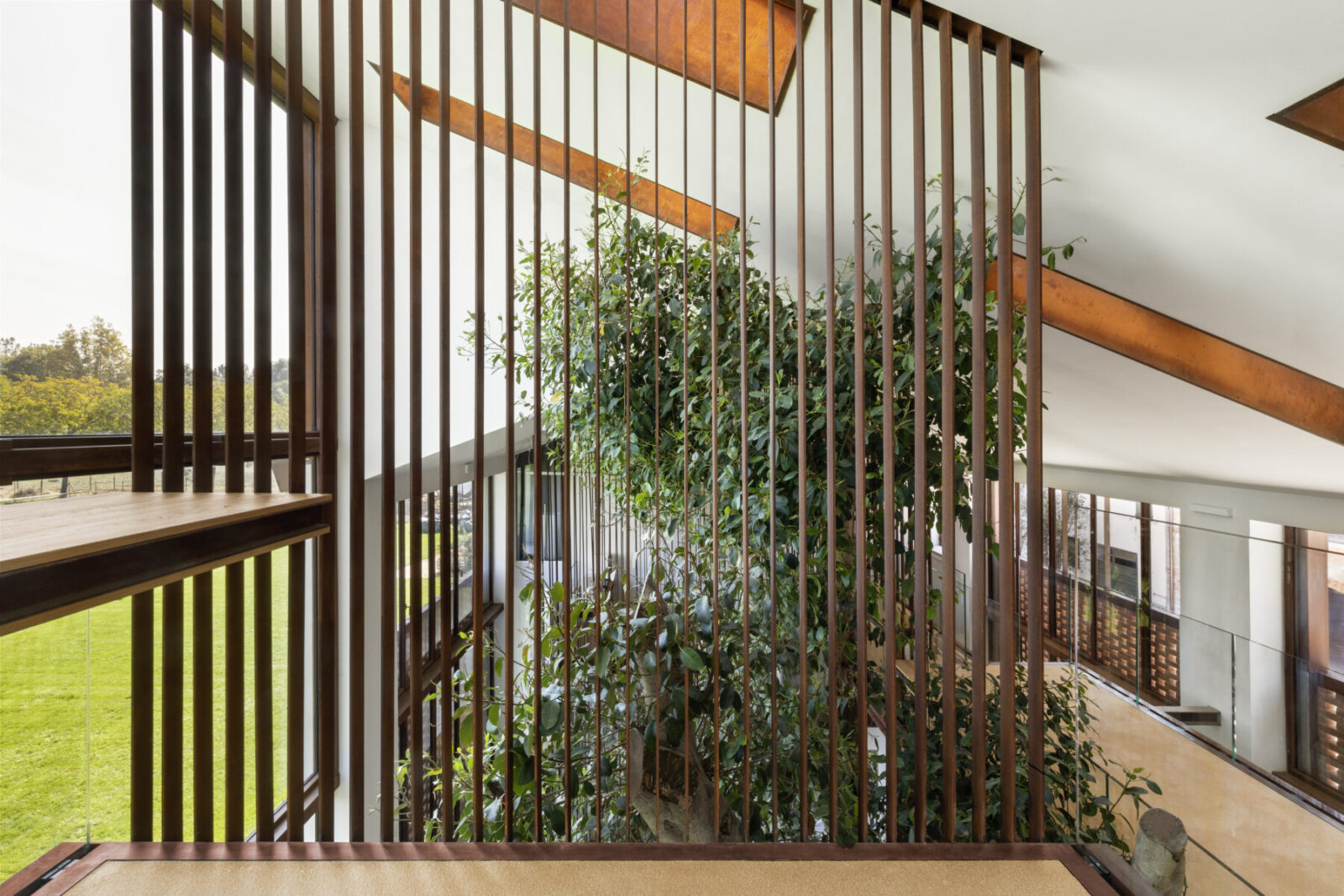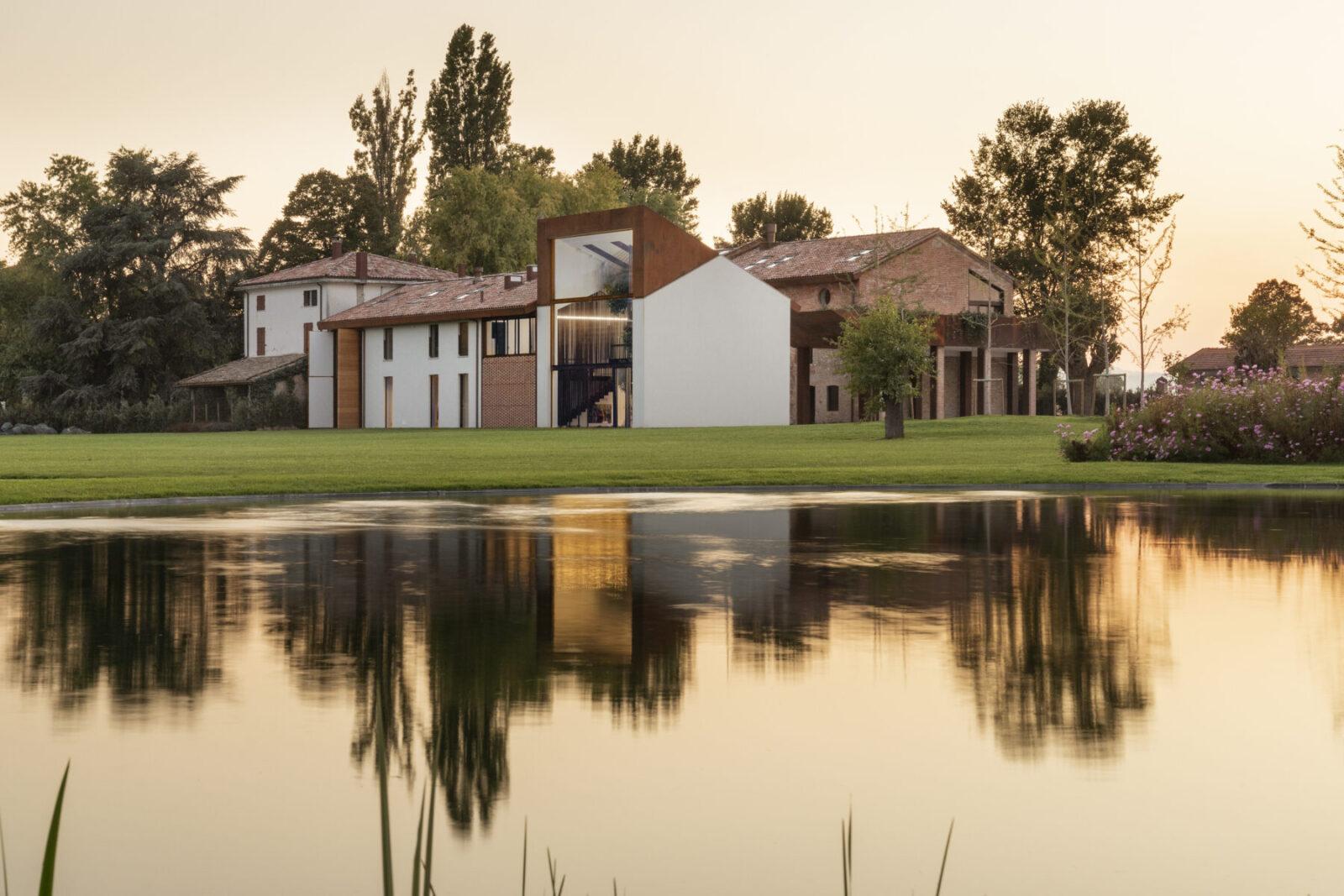A former farmhouse turned to a contemporary residence, built around a ten-meter-tall ficus tree by CRA-Carlo Ratti Associati in collaboration with Italo Rota. Using references from Adolf Loos’s principle of the Raumplan, the living spaces surround the tree in different levels creating several terraces. Micro-climate of the house like temperature and humidity are controlled by technology systems in order to ensure the right conditions for humans and nature to co-live.
-text by the author
International design and innovation office CRA-Carlo Ratti Associati, in collaboration with Italo Rota, unveils the Greenary, a residence that revolves around a ten-meter-tall tree at the center of the house. Multiple living quarters encircle the tree’s leafy branches, all the way up to its top. Located in the Northern Italian countryside, the house was commissioned by Francesco Mutti, CEO of Mutti, the European leading producer of tomato-related products. The project advances CRA’s research into new ways of fusing architecture, natural elements, and advanced technological solutions.
Built out of a traditional Italian farmhouse outside the city of Parma, the Greenary (a wordplay of “green-granary”) responds to the idea of biophilia, a scientific hypothesis proposed by noted biologist and Harvard professor E.O. Wilson, which suggests that human beings share an innate desire to live close to nature.
This concept is foremost expressed in the 60-year-old ficus tree named Alma standing in the middle of the living space. It belongs to a species called ficus australis that enjoys stable temperatures all year long and is thus well-suited for indoor living conditions. Its close relative ficus religiosa is venerated by Buddhists as the Bodhi tree, under which Siddhartha achieved enlightenment, while ficus microcarpa adorns the ancient parks across Southern China.
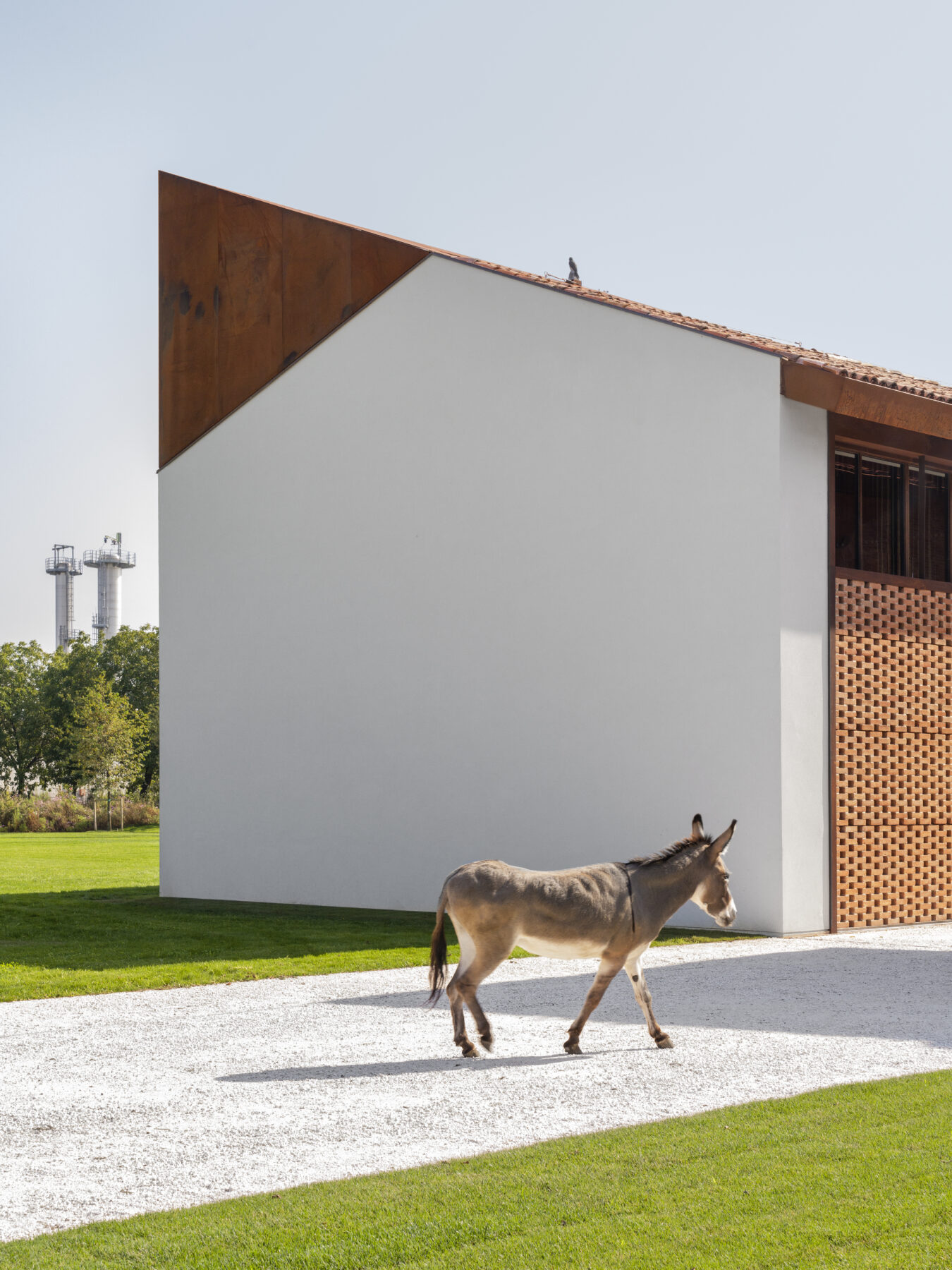
To create the ideal setting for the tree to thrive, CRA has completely redesigned the old farmhouse to maximise natural light, installing a ten-meter-tall, south-facing glass wall. The design harnesses technology and the micro-climate of the surrounding area to control the temperature and humidity, so that the tree and the home’s occupants can live together comfortably. Both the windows and the roof can be opened and closed automatically to adjust the amount of sunlight and fresh air entering the house.
The Greenary consists of seven terraced spaces, with three among them above the entrance and three below it. These dynamic, interconnected rooms reinterpret 20th-century architect Adolf Loos’ principle of the Raumplan – with nature at its core. Upon arrival, residents and visitors descend one meter to the main living area and the kitchen, which puts them at eye level with the idyllic meadow outside.
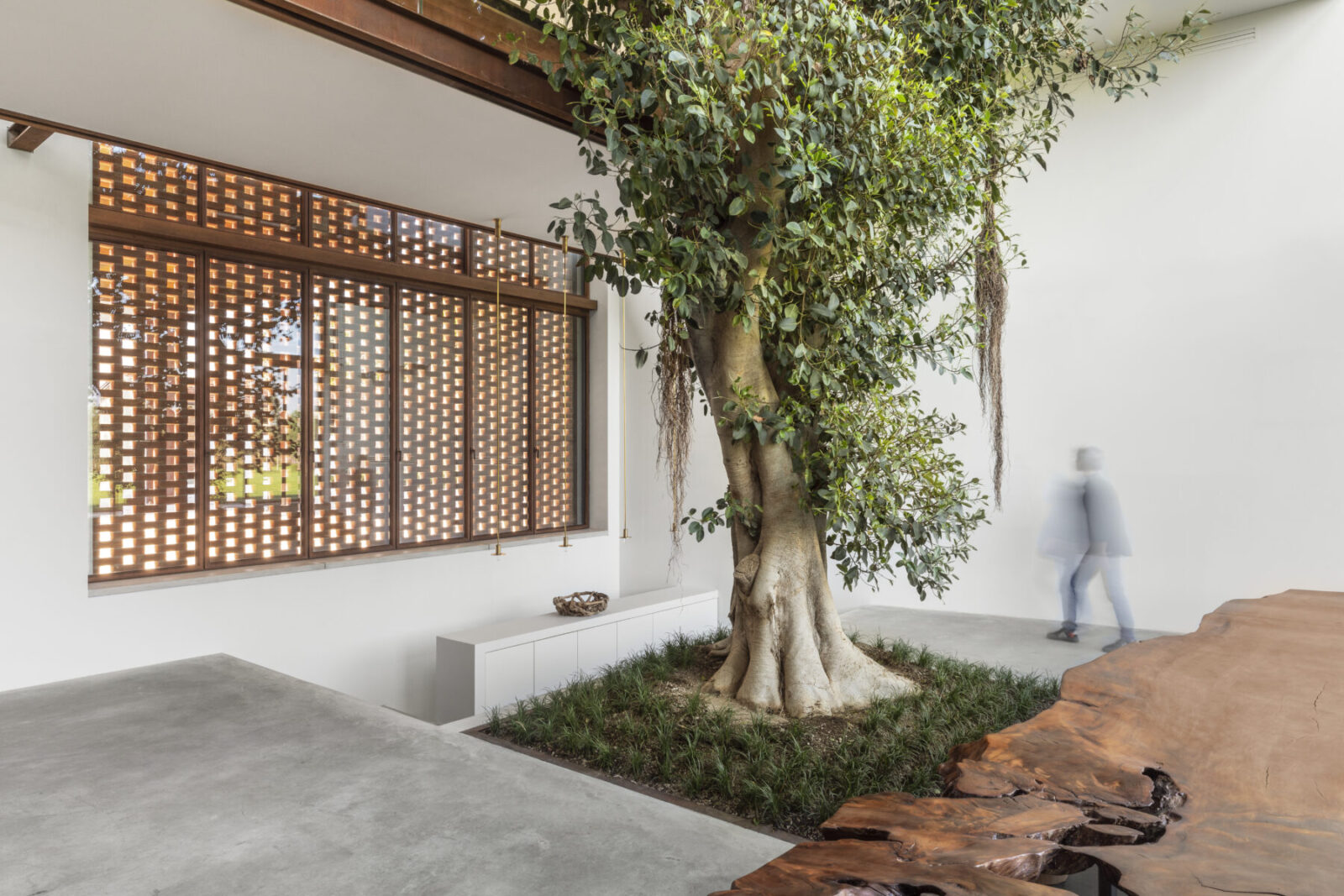
The other levels of the house were conceived to form a naturally-inspired journey, throughout which the tree serves as a prominent pillar. Nature is also incorporated in other forms throughout the interior space, such as in flooring that incorporates soil and orange peels.
“The 20th-century Italian architect Carlo Scarpa once said, ‘Between a tree and a house, choose the tree.’ While I resonate with his sentiment, I think we can go a step further and put the two together,” says Carlo Ratti, founding partner of CRA and professor at the Massachusetts Institute of Technology. “Much of CRA’s work focuses on the intersection between the natural and artificial worlds. With the Greenary, we are trying to imagine a new domestic landscape built around nature and its rhythm.”
The house was built on a site that spans over 2.5 hectares. Apart from the main residential unit, CRA also converted a granary at the back of the house into a workspace. Surrounding both buildings, a garden cultivated by renowned landscape designer Paolo Pejrone celebrates the biodiversity of the local region.
“In a flat landscape in which there are no mountains, hills, or lakes, but only plains, nature expresses itself through a beautiful light that changes throughout the day. It adds a charming, almost film-like quality to the atmosphere,” says Italo Rota, director of Italo Rota Building Office. “The environmental conditions around the Greenary inspired our design, and this represents one of the different expressions we use to illustrate the harmony between natural and artificial elements.”
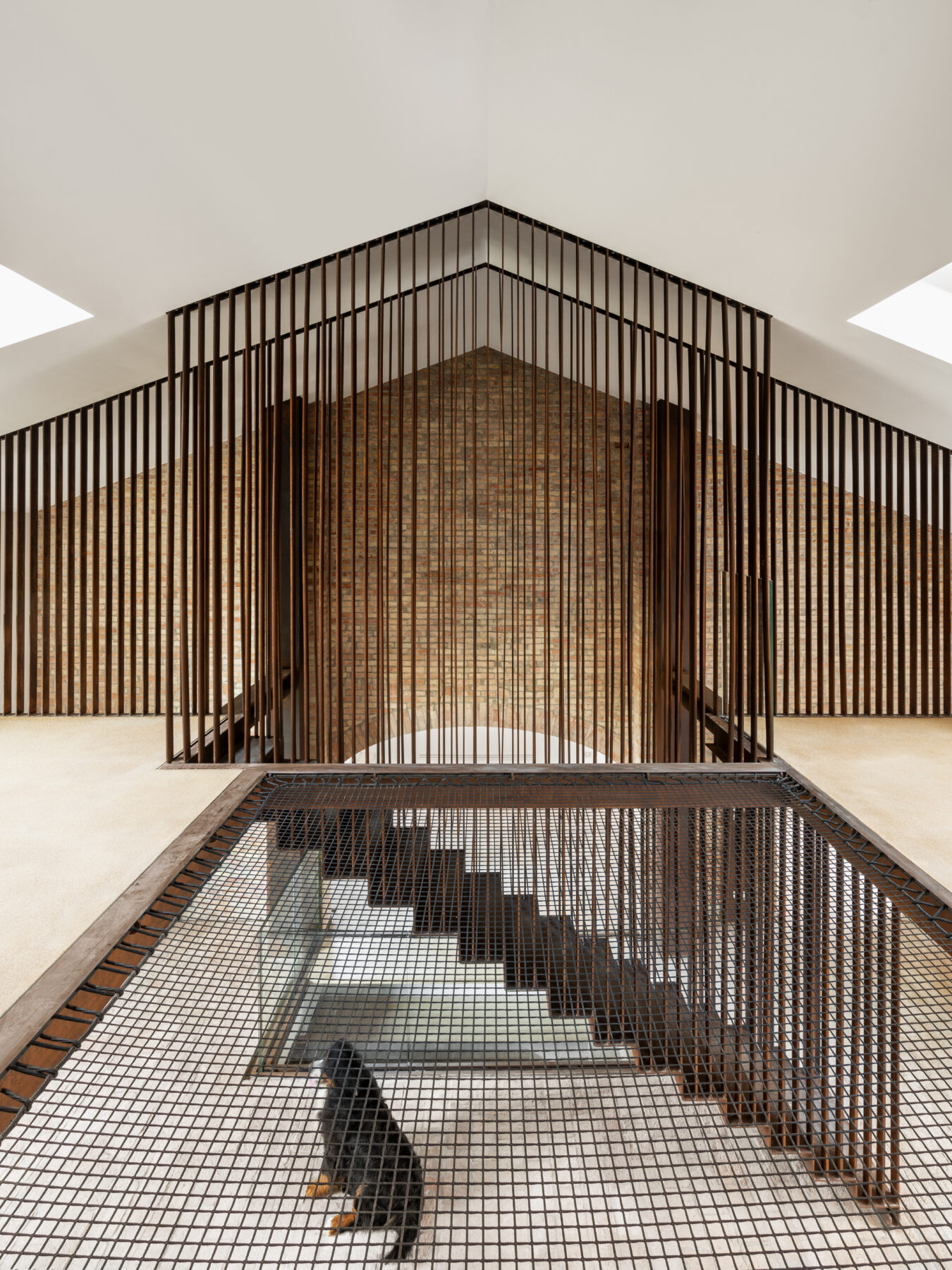
The residence represents the first completed component in CRA’s master plan for the area. Other planned buildings include a factory facility and a canteen-restaurant complex.
“Light enters the interior space through the pierced brick wall, corten steel stairs and tree branches. By doing so, it also mingles with the architectural details of the house, and leaves subtle shades all around it,” adds Andrea Cassi, partner of CRA.
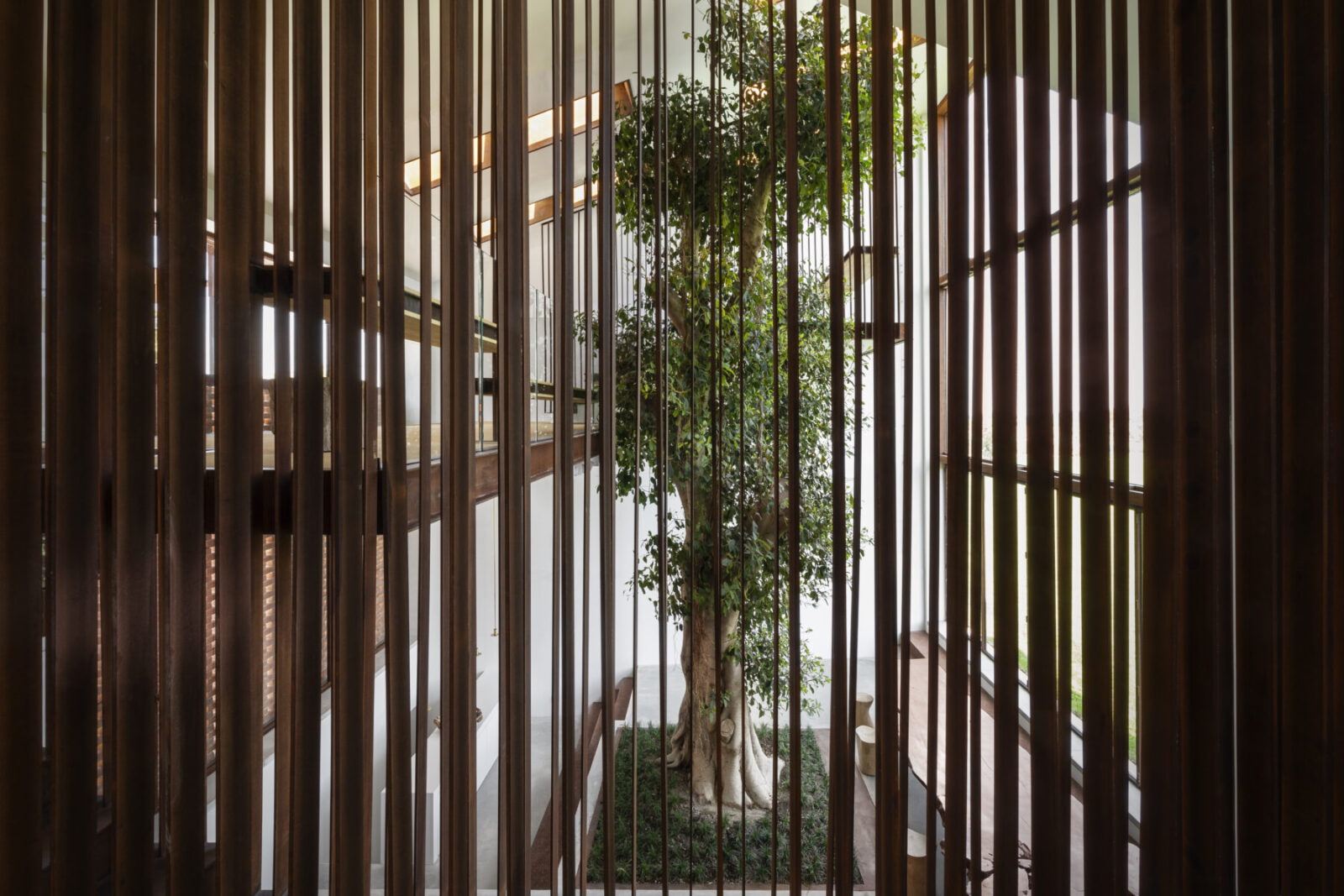
Throughout their many collaborations, CRA and Italo Rota have strived to accelerate the convergence between the natural and the artificial, using digital technology and innovative, organic materials. In October 2021, CRA and Rota, with Matteo Gatto and F&M Ingegneria, debuted the Italian pavilion at Expo Dubai 2020. The 3,500-square-meter structure explores circular economy and features a rope curtain facade made of two million recycled plastic bottles and algae installations for air purification. In Singapore, CRA and BIG jointly designed CapitaSpring, which has a suspended tropical forest at its core. Construction work on the 280-meter-tall tower will soon be concluded.
Credits & Details
Project: The Greenary
Design: CRA-Carlo Ratti Associati
Creative Lead: Italo Rota
CRA Team: Carlo Ratti, Andrea Cassi (partner in charge), Francesco Strocchio (project manager), Alberto Benetti, Mario Daudo, Serena Giardina, Anna Morani, Gerolamo Gnecchi Ruscone, Giovanni Trogu, Matteo Zerbi
Renderings by CRA graphic team: Gary di Silvio, Pasquale Milieri, Gianluca Zimbardi
Facade and MEP Engineering: AI Studio
Structural Engineering: AI Studio (with Luca Giacosa), Corrado Curti
Agronomy Consultants: Flavio Pollano and Paolo Battistel (Ceres srl)
Authority Approval, Accouting, Health & Safety Lead: Aldo Trombi
Planning and Works Supervisor: AU Studio
Landscape Design: Paolo Pejrone with Alberto Fusari
Construction: AeC costruzioni
Garden Cultivation: Arcadia Vivai Impianti
Photo Credit: Delfino Sisto Legnani and Alessandro Saletta, DSL Studio
About CRA
CRA-Carlo Ratti Associati is an international design and innovation practice based in Turin and New York. Drawing on Carlo Ratti’s research at the Massachusetts Institute of Technology (MIT), the office is currently involved in many projects across the globe, embracing every scale of intervention from furniture to urban planning. Among recent designs are the Italian Pavilion at Expo Dubai 2020, CapitaSpring Tower in Singapore, MEET Digital Arts Center in Milan, the Eyes of the City exhibition at the 2019 Bi-City Biennale of Architecture and Urbanism of Shenzhen, and the redesign of the Agnelli Foundation HQ in Turin. In March 2020, CRA initiated CURA (Connected Units of Respiratory Ailments), a global open-source initiative to convert shipping containers into plug-in Intensive-Care Units for COVID-19 patients. CRA is also the only design firm whose works have been featured three times in TIME Magazine’s “Best Inventions of the Year” list – respectively with the Digital Water Pavilion in 2007, the Copenhagen Wheel in 2014, and Scribit in 2019. In the last years, the office has been involved in the launch of Makr Shakr, a startup producing the world’s first robotic bar system, and Scribit, the write&erase robot.
READ ALSO: Dimokratias House in Palaio Psychiko, Athens | PILA
